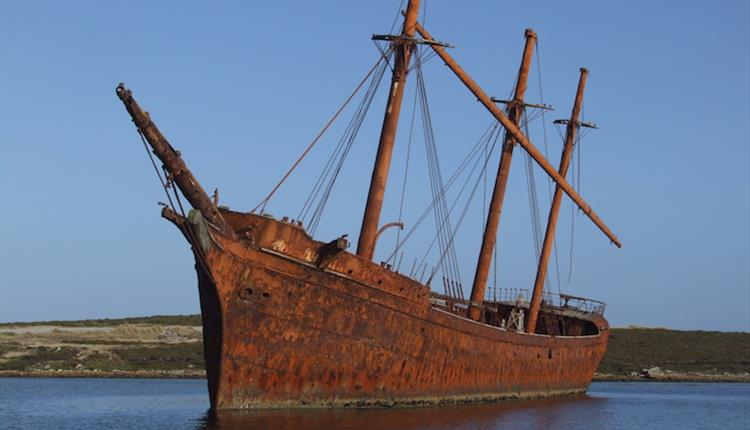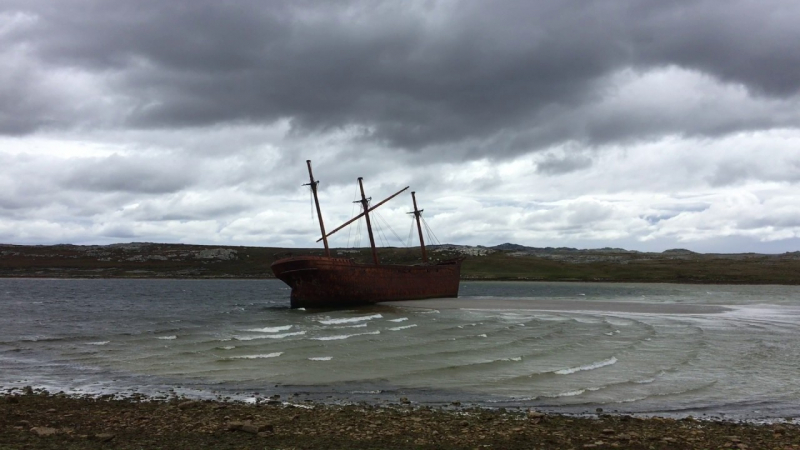Lady Elizabeth Shipwreck
This three-masted rusty iron bar, dubbed "Lady Liz" by locals, washed up on Whalebone Cove in February 1936 and is still there today. On June 4, 1879, Lady Elizabeth was launched from Sunderland, England. Her predecessor, the Lady Elizabeth, sank off the coast of Western Australia in 1878, and she was built to replace her. For more than 30 years, the second Lady Elizabeth successfully sailed around the world carrying freight.
Lady Elizabeth left Vancouver with a supply of lumber on December 4, 1912. She visited Mozambique. She meets powerful daughters while sailing over Cape Horn. The ship was destroyed, a large portion of the cargo was lost, and four men were thrown overboard. When she hit with Uranae Rock, off Volunteer Point, while limping to Berkley Sound on her way to Port Stanley for repairs, she suffered catastrophic hull damage. It was declared undeserving when it arrived in Port Stanley and purchased by the Falkland Island Company for use as floating wood storage.
Lady Elizabeth was pummeled by a strong storm on February 17, 1936. She drifted into Whalebone Bay and washed up on a shallow sandbar after breaking free from her mooring line. She had been vandalized for years, with opportunists stealing her wood and belongings. She is still swaggering, imposing, and proud today. Her current owner, the Crown Receiver of Wrecks, intended to turn her into a floating museum, but the project was put on hold due to a lack of funds.
Lady Elizabeth is still alive and well in Whalebone Cove, where she is partially buried. During high tide, the ship was said to rock back and forth due to smashing waves. Many of the ship's accouterments, such as the main anchor crank, the grooves holding the two lifeboats, part of the crow's nest, part of the spiral staircase, and much of her wooden deck, are still linked with Lady Elizabeth. However, the ship's hull had begun to rust, causing enormous holes, and the majority of the ship was severely rusted. The ship's bottom is inundated during high tide. On the inside of the ship, there are still areas of paint. The starboard bulkhead had fallen loose because some of the iron studs had corroded.
During a storm in the winter of 2008, the bow shattered. The dismantling of the bowsprit was debated by the Falkland Islands Museum and National Trust. Despite the fact that only historical ruins are left, the ship nonetheless has its unique historical charm.
Location: Whalebone Cove









